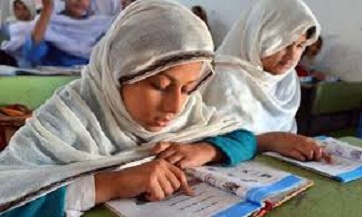
WEB DESK
The enrolment of Muslims in higher education in Haryana has dipped by 18.9 per cent, reveals the All India Survey on Higher Education (AISHE) 2020-2021, reports The Tribune.
There were 12,877 Muslims enrolled in higher education in 2019-20, which fell to 10,445 (18.9%) in 2020-21. Among all social groups, only Muslims have registered a fall
The figure of enrolment of Muslims for 2020-21 at 10,445 is just 1 per cent of the total enrolments of 10.29 lakh in higher education courses in the state
There were 12,877 Muslims enrolled in higher education in 2019-20, which fell to 10,445 in 2020-21. Among all social groups, only Muslims have registered a fall.
The figure of enrolment of Muslims for 2020-21 at 10,445 is just 1 per cent of the total enrolments of 10.29 lakh in higher education courses in the state. The community has a share of 7.03 per cent in the state as per the Census 2011. The fresh census has so far not been conducted.
This is the second time in the period of five years, from 2016-17 to 2020-21, when Muslim enrolment in higher education has fallen in the state. The last time, it was in 2017-18 when just 7,607 Muslims were reported to have been enrolled against 8,447 in 2016-17.
Among teachers in higher education institutions too, the representation of Muslims is negligible. Out of the 39,256 teachers, there are just 2,644 SCs (6.7 per cent), 46 STs (0.1 per cent), 4,634 OBCs (11.8 per cent) and 709 Muslims (1.8 per cent).
There are 56 varsities and 1,083 colleges in the state. If Gross Enrolment Ratio (GER) in higher education for 2020-21 is 31.1 in Haryana, it is 22 in the case of the SCs. The GER in higher education is calculated as total enrolment in higher education, regardless of age, expressed as a percentage to the eligible official population in 18-23 years.
For the third consecutive year, there are more women in higher education in Haryana when it comes to pursuing courses in regular mode.
There are 4.47 lakh women in higher education courses in regular mode against 4.11 lakh males. In the UG courses, there are 3.50 lakh females against 3.06 males, while in the PG courses, there are 89,560 women, but only 57,938 males.
A total of 2,502 women are pursuing PhD against 2,046 men. But among Professors and Associate Professors, there are more men, while among Assistant Professors, there are more women.
